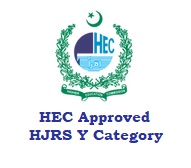Incaptive culturing of Goldfish and Koi carp in Punjab, Pakistan
DOI:
https://doi.org/10.47264/idea.nasij/3.2.4Abstract
This study observed the captive culture of Carassius auratus and Cyprinus carpio in the Potohar region, Punjab, Pakistan. Captive culturing of both species was conducted up to one-month post hatchlings. The sample size was 180 (90 goldfish and 90 koi carp) and kept in cemented raceways under optimum conditions. The study period was from October 2019 to April 2020. The natural breeding season for Carassius auratus and Cyprinus carpio was from 25th January to 5th February and the end of February to 11th March, respectively. The induced breeding duration for goldfish and koi carp was from 6th to 25th February and for koi carp from 12th to 30th March, respectively. For artificial breeding, the synthetic hormone Ovaprim C was injected intra-peritoneally at 0.5 ml/kg and 0.1 ml/kg body weight of females and males, respectively. Both the species were fed a 30% crude protein diet. Hydrilla plants were used for the adhesion of eggs. The female to male ratio was 2:3. Approximately 4500 to 5000 eggs of goldfish and 17000 to 18000 eggs of koi carp were laid. Fertilization, hatching, and survival rates observed for both were approximately 74%, 57% and 42.5%, respectively.
Downloads
Published
Issue
Section
License
Copyright (c) 2022 Maryam Begum, Yaseen Nasim, Pir Asmat Ali, Muhammad Siraj, Mehreen Riaz, Muhammad Irfan

This work is licensed under a Creative Commons Attribution-NonCommercial 4.0 International License.
Please click here for details about the Licensing and Copyright policies of NASIJ.








